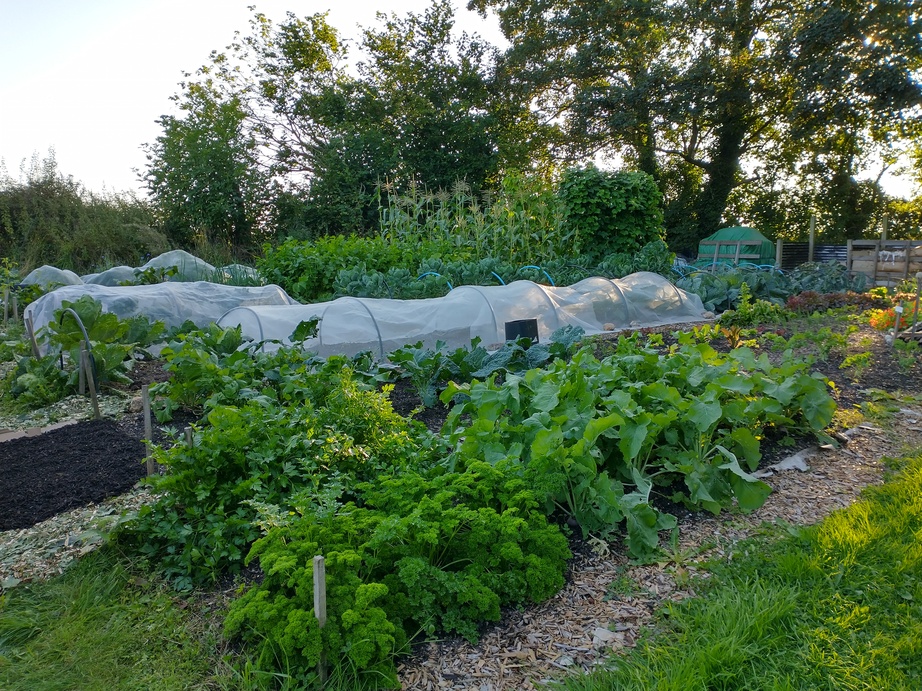The cobbler's children have no shoes

Not sure it looks that fantastic, but it does bring me a good deal of peace, especially given the events of the last couple of years. My GP went mental over my blood pressure when I had quite an unpleasant infection last summer (What did she expect? I was really not well!) and as a result I had to regularly take my own blood pressure for a few weeks. It was consistently lowest after I'd spent some time working in the veggie plot

This is one evening last August:
For salads in the colder months I mainly grow Reine des Glaces and Rouge Grenobloise lettuce; land cress; lamb's lettuce; salad rocket (not wild rocket); Pizzo, Golden Streaks and Red Frills mustards and Leaf Radish. I've also tried red Little Gem, but it does seem to be quite bitter if (I think) there's not enough light so it's a bit hit and miss. If I can get the timing right for sowing then coriander and chervil can also make it through the winter quite happily. Timing for coriander particularly seems quite tricky as it appears to take the weakest excuse to bolt. Last winter I managed to get things right, this winter it's been more tricky and then mice seem to have taken to the taste of coriander which further diminished the crop

With all of them, rather than cut the entire plant we pick a few leaves off each one and they last quite well (so I might aim to have half a dozen or so of each growing at the same time, say).
I've been really tempted to try growing radicchio and endive for the winter, but I'm not getting much interest from the rest of the family. I'm happy to grow too much of something everyone likes because it's always there if we fancy it and any excess just gets returned to the compost heap eventually. I'm not sure I want to put the effort into growing something that almost everyone turns their noses up at though.
James



















































